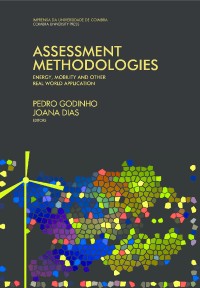Please use this identifier to cite or link to this item:
https://hdl.handle.net/10316.2/38160| Title: | Assessing the distribution and use of income and changes in income with social accounting matrices | Authors: | Santos, Susana | Keywords: | Social Accounting Matrix;National Accounts;Income Distribution;Macroeconomic Modelling | Issue Date: | 2015 | Publisher: | Imprensa da Universidade de Coimbra | Journal: | http://hdl.handle.net/10316.2/38126 | Abstract: | Several different areas of the socio-economic activity of countries, and in particular the distribution of income, can be studied with the use of Social Accounting Matrices (SAMs). The features underlying a SAM allow for the reading and interpretation of the socio-economic activity of countries, leading to the production of an empirical work that can highlight specific aspects of the reality under study and offers the chance to perform experiments with changes in those aspects. Thus, SAMs can also be used to support policy decision processes. With the aid of some methodological principles based on the works of R. Stone, G. Pyatt and J. Round, a SAM-based approach to the study of income distribution is carried out, seeking to provide both an empirical and a theoretical description of the socio-economic activity of a country, respectively through a numerical and an algebraic version of a SAM. The algebraic version can also be referred to as a ‘SAM-based model’. This study uses the nomenclatures of the latest version of the System of National Accounts (2008 SNA). By including production and institutions accounts in a matrix format, the structural features of a country’s production and income distribution can be worked upon together, making it possible to capture specific networks of linkages and the corresponding multiplier effects, in subsequent modelling exercises.A basic SAM is presented, with rows and columns representing accounts. The production accounts are represented by activities (or industries), products (or goods and services), and factors of production. The (domestic) institutions are represented by the current, capital and financial accounts. The rest of the world account represents the “external” part of the (domestic) economy. Bearing in mind the importance of ensuring the consistency of the whole system, possible disaggregations and extensions to that basic structure are analysed. Aggregates and balancing items that can be identified and calculated outside this matrix format are also presented. An assessment of a country’s distribution and use of income is presented, by means of the identification of some of the underlying structural features of SAMs. Macroeconomic effects of changes in income are then identified by way of an experiment with a change in the taxes on income and wealth, paid by the households to the government, using a SAM-based approach. The exposition is accompanied by an example which is applied to Portugal. | URI: | https://hdl.handle.net/10316.2/38160 | ISBN: | 978-989-26-1038-2 978-989-26-1039-9 (PDF) |
DOI: | 10.14195/978-989-26-1039-9_14 | Rights: | open access |
| Appears in Collections: | Assessment methodologies: energy, mobility and other real world application |
Files in This Item:
| File | Description | Size | Format | |
|---|---|---|---|---|
| assessing_the_distribution_and_use_of_income_and_changes_in_income_with_social_accounting_matrices.pdf | 967.89 kB | Adobe PDF |  |
Items in DSpace are protected by copyright, with all rights reserved, unless otherwise indicated.
